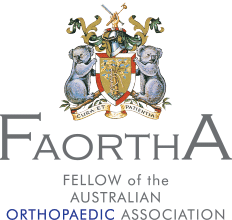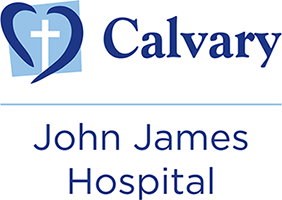ACL
Reconstruction
Dr Damian Smith is highly skilled and experienced in the reconstruction of the anterior cruciate ligament (ACL), a surgery designed to restore knee stability and strength after the ligament has been torn.
Book an Appointment
The anterior cruciate ligament (ACL) is one of the most commonly injured ligaments of the knee, usually occurring in people who play high-risk sports such as soccer, basketball and netball.
If you have a torn ACL with significant functional instability and a high risk of developing secondary knee damage, you may need ACL reconstruction surgery. This procedure generally involves replacing your ACL with a substitute graft made of tendon. ACL reconstruction is generally a very successful procedure but like any medical treatment has potential risk and complications. You should discuss any concerns you have with Dr Smith and your GP.
Dr Damian Smith has extensive experience in the treatment of ACL injuries and is able to advise and navigate you through the treatment options—surgical or non-surgical— depending on the extent of your injury.
The anterior cruciate ligament (ACL) is a strong ligament within the knee joint that connects and stabilises the femur and tibia. The ACL is a primary dynamic stabiliser of the knee joint, particularly when performing rigorous activities such as sport or negotiating uneven and unstable surfaces.
Injury to the anterior cruciate ligament may occur during sporting activities involving a collision, twisting injury or awkward landing. It may also occur as a result of a work-related injury, falls or other activities that cause a twisting injury to the knee, such as a sudden change of direction. Frequently the knee will swell within hours of the injury and there is often a sensation of popping within the joint at the time the injury occurs. Occasionally other structures within the knee can be damaged at the same time, such as the meniscus cartilage, joint or articular cartilage and other ligaments.
Diagnosis
Frequently the diagnosis of an ACL injury can be made on the basis of the history and mechanism of injury together with the clinical examination demonstrating laxity or instability in the knee joint. Usually an MRI scan (Magnetic Resonance Imaging scan) will be performed to confirm the diagnosis and look for any other possible damage within the joint.
Initial Treatment
If you have sustained a knee injury and suspect an ACL tear, it is important that you seek medical attention early for advice regarding control of the swelling and pain and to facilitate early referral to a specialist. Seeing a physiotherapist early after the injury will also help with minimising the swelling and the deconditioning of the muscle around the knee. It is important that you avoid sports, uneven surfaces and heights after the injury because your knee is susceptible to collapse or instability episodes.
Indications for ACL Reconstructive Surgery
Young patients keen to maintain an active lifestyle, athletes, patients with significant instability and frequent episodes of the knee giving way, people in high risk occupations such as emergency service workers, military, construction workers.
Pre-Surgery Care
It is recommended that you see a physiotherapist prior to any surgery to reconstruct the ACL. This will help reduce the swelling, restore the range of motion and recondition the muscles around the knee joint prior to any surgery.
Surgery
ACL reconstruction is performed arthroscopically under a general anaesthetic. The Anaesthetist may talk to you about the potential benefits of a nerve block with local anaesthetic for initial post operative pain relief. For most patients ACL reconstruction requires an overnight stay in hospital.
The ACL is reconstructed using a graft. Grafts may be autograft (using your own tissue), allograft (tissue prepared from a human donor) or synthetic graft. Autograft is by far the most common for primary ACL reconstruction and has the best long-term outcome. The most common grafts used to reconstruct the ACL are the hamstring tendons. The patellar tendon can also be used as a graft.
Once the graft has been harvested, it is prepared so it can function in the role of the ACL. The graft is then passed through drill holes which have been arthroscopically prepared in the tibia and femur. These drill holes or tunnels position the graft to replace the injured ACL. The graft is secured in the bone with specifically designed fixation devices. These devices are usually left permanently in place. These fixation devices provide initial stability to the graft which will heal into the bone with time over the next 6-12 months.
Post-Operative
Following your surgery you will be taken back to the ward via the recovery room. Most people will stay overnight. You will have a padded bandage over your knee following the surgery. You will be given regular pain relief medication and encouraged to place an ice pack onto the knee which will also help control pain and swelling. Occasionally a brace or splint may be applied to the knee.
Commonly Asked Questions
Can I treat and manage my ACL injury without surgery?
Yes. Some patients who suffer an ACL tear may be able to treat the injury non-operatively and return to good function through physiotherapy/rehabilitation and being diligent with activity modifications. Provided the knee is stable for everyday activities of living, these patients may do quite well. It is strongly advised, however, that you given up high impact agility and side-stepping sports because of the high risk of knee instability and further injury. People who work in high risk occupations such as emergency service workers, military and construction workers should also be aware of the risks and consequences of further knee instability episodes.
Will an ACL injury cause knee arthritis?
There is a higher risk of knee joint arthritis in patients with ACL injury compared to the non injured population. This risk is even greater if the ACL injury is associated with meniscus tears. The bulk of the medical literature shows that ACL reconstruction decreases the incidence of arthritis compared to non-operative management but does not fully eliminate the risk.
Can I return to sport following ACL reconstruction?
ACL reconstruction certainly improves knee stability and biomechanics compared to the ACL deficient knee. Following a period of post-operative physiotherapy and rehabilitation, the majority of patients can return to a broader range of activities and sports.
What is the risk of further injury following my reconstruction?
There is about a 10% risk of re-injury to the ACL graft upon return to sports and usual activities. The literature also shows that patients who have had an ACL injury and reconstruction have about a 10% chance of ACL injury to the other knee.
What is the role of physiotherapy following my reconstruction?
Post-operative physiotherapy is very important in the ultimate functional outcome and return to sport following an ACL reconstruction. The physiotherapy programme goes over a 6-12 month timeframe and your physiotherapist will introduce new exercises and activities as the graft heals. In the latter stages of your rehabilitation, your physiotherapist will take you through a programme of neuromuscular retraining and sport-specific drills prior to you returning to your usual sporting endeavours. This neuromuscular retraining has been shown to reduce the incidence of re-injury.
Why choose
us?
-
Integrative approach
-
Advanced technology
-
Highly trained and experienced
-
Lower Limb Specialists
-
Personalised care
- Learn more


